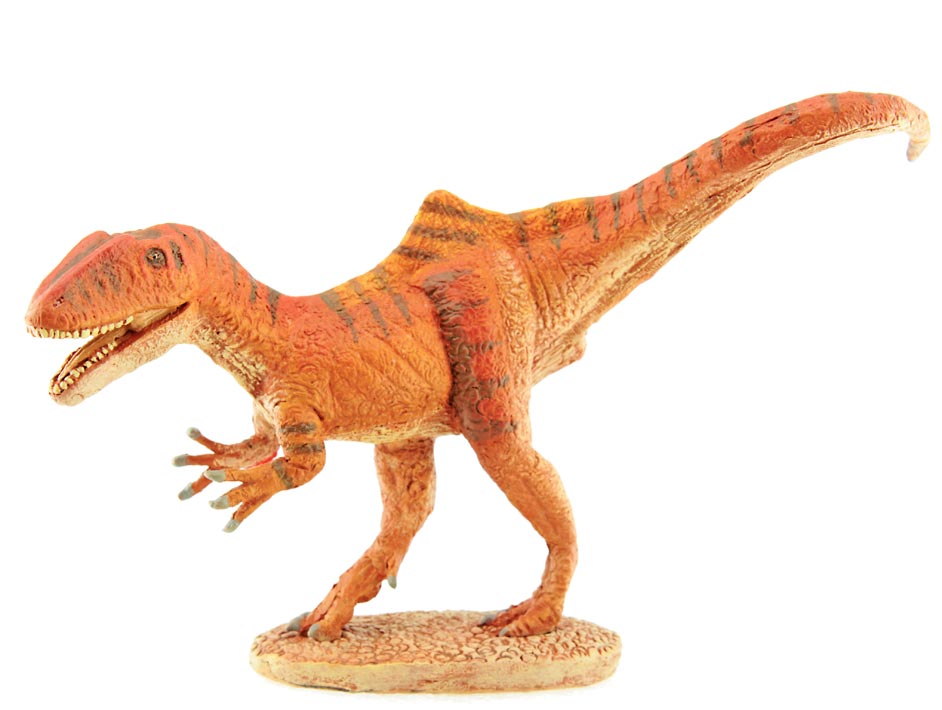The Paleo-Creatures Concavenator Model Reviewed
It’s fascinating to see the interpretation of an unusual dinosaur by a talented model maker, especially a dinosaur which is synonymous with the country in which that model maker resides. That is exactly what has happened with the excellent Concavenator corcovatus designed by Jesús Toledo as part of his Paleo-Creatures prehistoric animal model series.
In this short video (just under three minutes and twenty seconds duration), the artist talks us through the inspiration behind his choice of colour scheme and provides some further information about this enigmatic Spanish dinosaur that was formally named and described just six years ago.
The Video Review of the Concavenator Replica
Video credit: Paleo-Creatures
Take a tour or Everything Dinosaur’s website: Take a Tour of Everything Dinosaur.
Concavenator corcovatus by Paleo-Creatures
Although known from just one specimen found in the Iberian Mountains of Cuenca Province, (Spain), the fossils attributed to this genus represent one of the most complete theropod skeletons ever found in Europe. The excellent state of preservation and the articulation of the fossils suggests that the carcase of this meat-eater was washed into a lake not long after the animal died. Once in the lake, the corpse was rapidly buried by other sediment and these conditions permitted much of the animal’s remains to be preserved.
At around six metres in length, Concavenator would have been a formidable predator, in the video sculptor Jesús explains that he wanted to give the impression of a swift and dangerous hunter, hence the quite dynamic pose.
The Paleo-Creatures Concavenator Replica by Jesús Toledo
Picture credit: Everything Dinosaur
Concavenator has been given a set of “tiger stripes”. Obviously, the colouration of prehistoric animal models is a speculative business but it is not hard to imagine a Concavenator using tree cover and brush to sneak up onto a herd of unsuspecting iguanodonts. In a forest environment, such camouflage would have been very effective. In addition, the detail on the head is nicely done and all the teeth on our hand-painted models have been painted with great care.
Quill Knobs
The ulna (one of the bones in the forearm), of Concavenator shows evidence of what may have been the connection points for a series of quills or quill knobs. In accordance with this, the artist has added some small feathery ornamentation to the forelimb. The video gives the viewer the opportunity to view the limbs and to see the feathers. That distinctive hump is well-crafted too. Quite why the eleventh and twelfth vertebrae were twice the size of the other back bones remains a mystery.
The Paleo-Creatures Concavenator replica certainly shows off this dinosaur’s hump, given that this theropod also possessed cranial crests (also depicted in the model), it has been suggested that the hump may have played a role in visual communication, perhaps to win a mate or to deter rivals. Other palaeontologists have suggested that the hump may have evolved to assist with thermoregulation.
The Paleo-Creatures Concavenator is described as being in approximately 1:32 scale, it forms part of a hand-crafted and hand-painted prehistoric animal model range created by Spanish artist Jesús Toledo.
To view the range of prehistoric animal models available from Everything Dinosaur: Dinosaur and Prehistoric Animal Models and Figures.
To read Everything Dinosaur’s 2010 article about the discovery of Concavenator: A New Theropod Dinosaur from Spain. One Lump or Two?







Leave A Comment